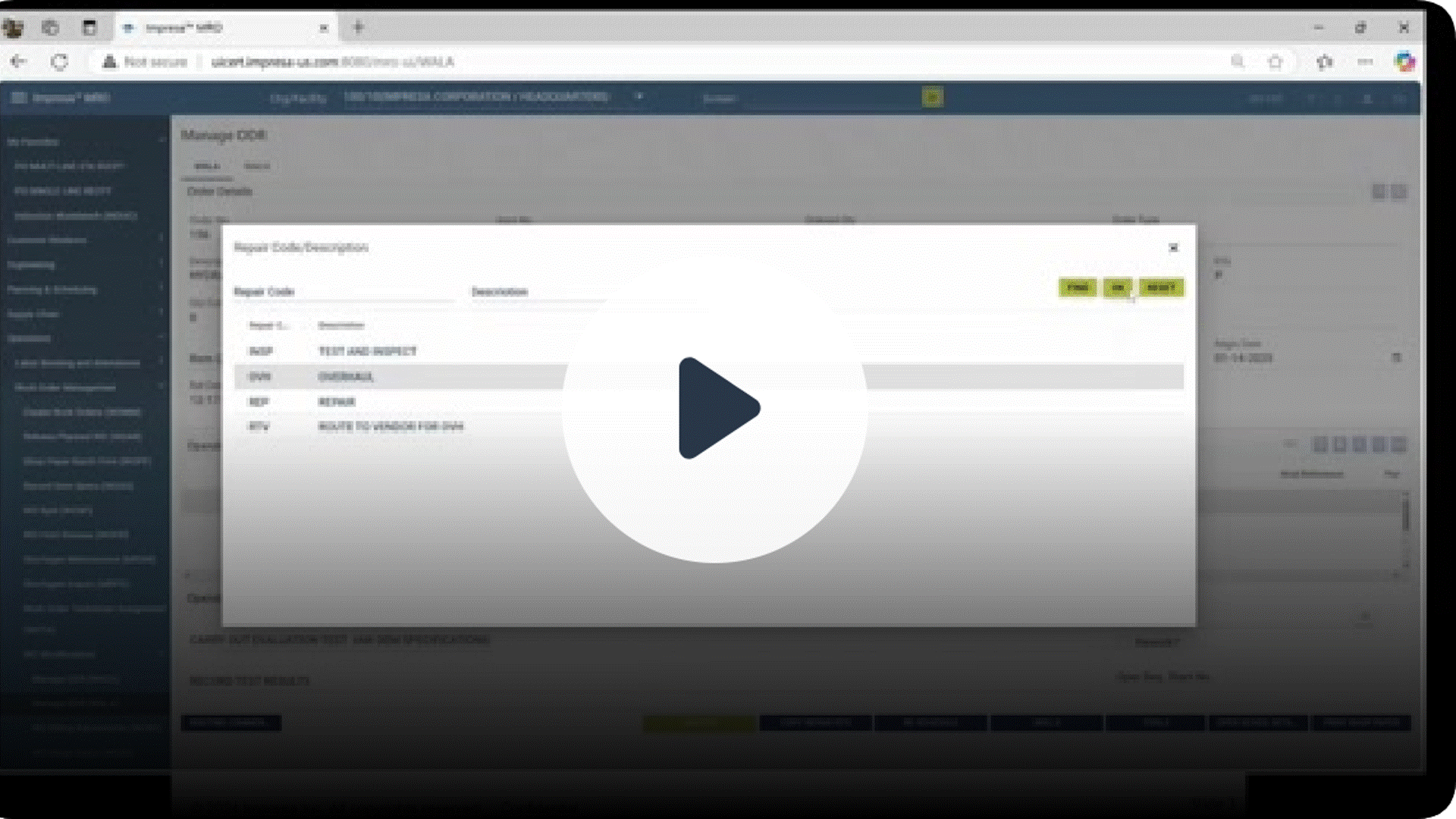Impresa™ MRO Software Orchestrates Aviation Maintenance
A self-hosted, cloud-ready aircraft maintenance software platform that unifies people, tools, parts, files, and data. Reduce turnaround time (TAT), accelerate aircraft return-to-service, ensure regulatory compliance, and reduce costs—all without the burden of legacy ERP systems.

Impresa MRO software acts as a conductor of aviation maintenance, transforming operations into a seamless performance. From MRO inventory control and work orders to labor tracking, compliance, and analytics, our digital MRO platform gives providers, OEMs, and airlines real-time visibility and control in one place.

Faster Turnaround Times (TAT)
Reduce maintenance cycle time with automated scheduling, real-time tracking, and optimized resource allocation—so aircraft return to service is faster.

Lower Total Cost of Ownership
Break free from costly MRO ERP systems with unlimited access, flexible pricing, and no hidden integration fees—scaling as you grow.

Real-Time Visibility and Control
Unify MRO systems for inventory, labor, compliance, and customer interactions in a single dashboard. Make decisions with live data instead of spreadsheets.

Purpose-Built Software for Mid-life Aircraft Maintenance
PLM is designed for product development and ERP for production manufacturing—but neither is built for the complexity of routine and unscheduled maintenance. Impresa MRO software bridges the gap, synchronizing heavy maintenance, component shops, and fleet modifications into one cohesive flow. With automated compliance, real-time visibility, and streamlined work-package execution, providers can reduce TAT, extend aircraft life, and eliminate operational chaos.
Solving Aviation MRO’s Biggest Challenges
The aviation industry faces mounting challenges—labor shortages, tight margins, and rising compliance demands. Impresa MRO turns complexity into clarity with real-time visibility and control across every stage of MRO operations.
Labor Intensive Processes
Connected, end-to-end MRO solution digitizes planning through close-out, boosting technician productivity.
Tight Margins
Our cloud-ready MRO platform synchronizes assets to deliver faster turnarounds, lower TCO, and protect margins.
Workforce Shortage & Onboarding
Impresa’s intuitive interface and guided tasks accelerate technician ramp-up while maintaining high throughput.
Compliance & Regulatory Pressure
Impresa ensure audit-ready records and embedded controls in real time—reducing compliance risk without extra effort.
Aviation MRO Resources: Guides, Case Studies, and Customer Stories
Discover how aviation leaders are reducing TAT, improving compliance, and modernizing maintenance with Impresa MRO software. Explore best practices, customer stories, and expert insights from across the industry.

Reducing TAT in Aviation MRO
Best practices in component induction and asset tracking.

From Spreadsheets to Real-Time Control
How Turbine Controls replaced manual tools with Impresa MRO to gain visibility, speed decisions, and strengthen compliance.

“Our processes are streamlined and computer touch time significantly reduced using Impresa’s Execution Excellence principles.”
David Tetreault, GM Manufacturing & MRO Services, WGI, Inc.
Built on Aerospace Expertise.
Driven by Innovation.
For more than 20 years, Impresa’s leadership has combined aerospace and defense experience with advanced software engineering to solve aviation maintenance’s toughest challenges. Our self-hosted MRO platform gives providers full control over their data and systems while delivering modern tools to reduce turnaround time, ensure regulatory compliance, and streamline operations. Every release is grounded in proven industry knowledge and a commitment to customer success.
Impresa Corp.
30497 Canwood Street,
Suite 104
Agoura Hills,
CA 91301
SALES / TECHNICAL SUPPORT
1 (818) 874-9227 (USA Only)
